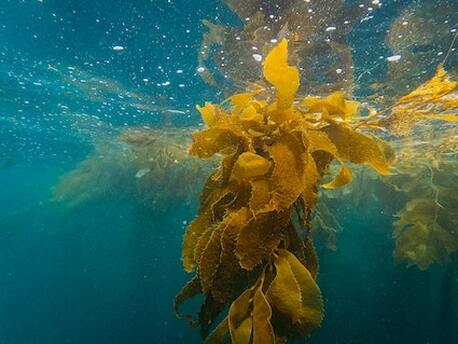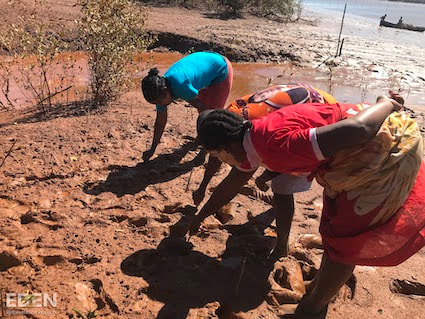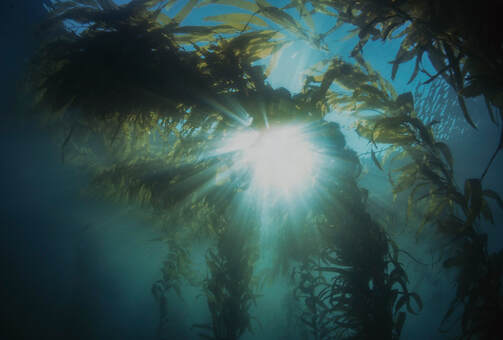Happy World Ocean Day! Today we’re shining the spotlight on the big deep.
You may know that oceans represent 70% of the world’s surface area, but have you ever thought about how we’d all be at sea without the part they play in keeping our climate stable? And their role goes much deeper than just water – enter ‘blue carbon’.
You may know that oceans represent 70% of the world’s surface area, but have you ever thought about how we’d all be at sea without the part they play in keeping our climate stable? And their role goes much deeper than just water – enter ‘blue carbon’.
I’ve heard of blue steel, but what's blue carbon?Not this season’s latest colour trend, but the name for carbon that's captured and stored by marine and coastal ecosystems. The superheroes of blue carbon storage are mangroves, seagrasses and marshes, which can be found on every continent except for Antarctica. Humble kelp is the other carbon-sink badass.
|
How do these trees and plants help?
These ecosystems suck up carbon dioxide from the air and the oceans through photosynthesis, like other plants, and store it in the soil below. This helps fight climate change by taking carbon dioxide from the atmosphere and keeping it locked away for a very long time.
But what makes them even more special is that they’re so effective at drinking up carbon, they can store up to 10 times more carbon per area than forests on land.
They literally suck?Blue carbon ecosystems suck hard in removing carbon, but that’s not the only thing they’re great at. They also boost biodiversity, providing a home for animals and sea creatures of all sizes, from crocodiles, sharks and turtles down to crabs, fish and invertebrates. This in turn supports local communities, providing food, livelihoods and ecotourism.
|
It’s worth celebrating the fact that mangroves capture a whopping 14% of the carbon sequestered by oceans each year. But we should throw an even bigger party for the way they also front up as shields, helping to reduce soil erosion and protecting coastlines from floods, storms, cyclones and tsunamis
Also invited to the party is kelp, which is the fastest growing tree on the planet! Every year it stores the equivalent to the carbon emissions of Egypt – up to 250 million tonnes of carbon per year globally at current levels. It provides one of the most biodiverse environments on earth. And, kelp is also versatile enough to be used as food, a sustainable biofuel, animal feed (with the astonishing added bonus of cutting the methane emissions of cattle farms) and a fertiliser.
The bad news is that all of these ecosystems are under threat from pollution and climate change, which is damaging and destroying them.
Eau no! What’s happening to them?The increase in ocean temperatures, acidification from more carbon dioxide in the atmosphere and more frequent extreme weather are all taking their toll, meaning these amazing ecosystems are rapidly disappearing.
Australia has already lost 95% of its ocean kelp forests, and in the last 100 years the UK has lost 92% of its seagrass meadows. |
And as if it wasn’t bad enough losing them, when these ecosystems are destroyed they release the carbon they’ve been storing for centuries, or even millennia, contributing to the greenhouse gas problem.
What can we do to protect these environments?
Thankfully restoration projects are underway and you can play a part in helping to protect these hard-working heroes. JUST ONE Tree has been planting mangroves in several countries around the world since 2019, including Haiti, Indonesia and Madagascar. These projects also help to provide work and a sustainable future for local communities.
Meanwhile, in the Philippines' Camotes Sea and the sea around Tasmania, JUST ONE Tree has been working with the Climate Foundation to restore the kelp forests.
|
But instead of simply planting more kelp, we’re addressing the problem of kelp deforestation, caused by rising water temperatures.
We’re helping to fund green technology which brings cool nutrient-rich water from lower depths up to platforms where kelp is grown. The results have been incredible with the Marine Permaculture kelp growing at 5% a day and signs of marine life returning to the area.
|
But, now more than ever, these unique ecosystems need our help. Join us, donate, spread the word - and help drive the sea change!


















